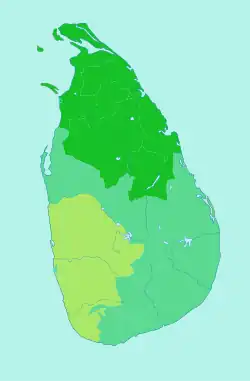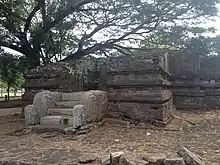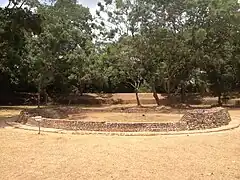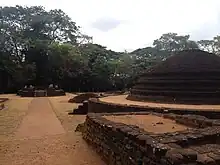Principality of Maya Rata | |||||||||||
|---|---|---|---|---|---|---|---|---|---|---|---|
| 504 BC–1153 | |||||||||||
 | |||||||||||
| Capital | Panduwasnuwara (504 BC–12 century) Kelaniya (3rd century BC) | ||||||||||
| Common languages | Sinhala | ||||||||||
| Religion | Buddhism | ||||||||||
| Government | Monarchy | ||||||||||
• 504 BC-474 BC | Panduwas Deva | ||||||||||
• 1187–1196 | Parakramabahu of Dakkhinadesa | ||||||||||
| History | |||||||||||
• Established | 504 BC | ||||||||||
• Disestablished | 1153 | ||||||||||
| |||||||||||
The Maya Rata (Principality of), also known as the Kingdom of Dakkinadesa, was a principality or an administrative region of the Sinhalese kingdom. It was located in the Southwestern part of Sri Lanka, bordered the Deduru Oya. Its last capital was Parakramapura. The principality was disbanded following the formation of the second kingdom of Polonnaruwa by Parakramabahu I.[1][2]

A ruins of a Bodhighara (an enclosure constructed around bo-trees) at Kingdom of Dakkinadesa archaeological site

The so-called Chakrawalaya, foundations of a circular building or tower, and the subject of numerous stories

The ruins of the palace (12th century)

Ruins of Buddhist Panchayathana
See also
References
This article is issued from Wikipedia. The text is licensed under Creative Commons - Attribution - Sharealike. Additional terms may apply for the media files.